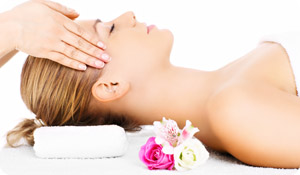
Looking for natural remedies for your aches and pains? Whether you suffer from headaches, backaches, joint inflammation, or overall soreness, there are plenty of ways to ease your discomfort without resorting to drugs.
The following methods may provide pain relief for patients suffering from everything from injuries to arthritis to migraines:
Hot and Cold Compresses
It sounds old-fashioned, but applying a hot and/or cold compress can be very effective. "Heat is helpful for relaxing muscles and reducing stiffness," says Elliot Rosenstein, MD, medical director of the Institute for Rheumatic and Autoimmune Diseases at Overlook Medical Center in Summit, NJ. Cold compresses, on the other hand, help diminish inflammatory swelling. If the idea of using two seemingly diametrically opposed treatments seems counterintuitive, don’t worry: "Despite the convention that heat and cold are opposites, sometimes both modalities can be helpful for the same local complaints," Rosenstein says.
Acupuncture
This traditional Chinese medical therapy, in which fine needles are inserted at specific points at the body to adjust the body’s energy, or qi, is often used to treat pain symptoms. Elizabeth Healy, licensed acupuncturist and owner/director of West Village Acupuncture in New York City, has successfully treated people with chronic migraine as well as one person who’d had weakness, numbness, and pain in the lower limbs with a combination of acupuncture and internal herbal formulas. "I have seen patients go from three to four debilitating migraines a week to two to three migraines per year," says Healy. "Prior to treatment the only relief had been to take meds that would knock them out so that the headaches would pass. Now they are able to manage the few headaches per year using relatively mild medications."
Diet and Supplements
If you’re battling chronic headache pain, a diet overhaul may be in order. "Foods and food sensitivity frequently account for headaches, especially migraine," says Mimi Guarneri, MD, executive director of the Center for Well Being and Integrative Medicine program at Atlantic Health System in Morristown, NJ. Common culprits include dairy, gluten, soy, corn, eggs, sugar, tree nuts, and citrus. She recommends that anyone who suffers from headaches consider a trial of the elimination diet, in which suspect ingredients are systematically removed from the diet (under the supervision of a doctor) and the physical responses are noted.
Supplements can also be used to prevent migraines, Guarneri adds. She recommends butterbur (a plant), which is "an excellent option for migraine prevention" as well as B vitamins and magnesium.
An anti-inflammatory diet may help, too. Healy counsels her patients to reduce their intake of inflammatory foods—think sugar and foods that convert to sugars, like white foods, such as processed grains, and alcohol.
Arthritis specialist Nathan Wei, MD, of the Arthritis Treatment Center in Frederick, Maryland, also suggests exploring anti-inflammatory herbs and supplements, such as dietary fish oil, turmeric, and ginger.
Exercise
While physical activity may not sound appealing if you’re achy and sore, in some cases, it can help lessen pain. People with arthritis, in particular, may find practices like gentle stretching or hatha yoga helpful in loosening stiff and painful joints, while people recovering from injuries often find that conditioning exercises help build strength and prevent further damage. Speak with your health care provider about developing a pain-fighting exercise plan.
Massage
Therapeutic massage can offer great pain relief, says licensed massage therapist Anthony Zillmer of A2Z Massage Therapy in New York City: "Massage promotes circulation of blood and tissue fluid, which brings fresh supplies so the body can start the healing process more rapidly," he says. It also reduces and removes painful adhesions and disruptions of the connective tissue, common in people with chronic pain.
What’s more, massage can also provide a kind of helpful neurological overload: "With all of the sensory information going through the thalamus in the brain, the brain temporarily ignores the pain signals." Zillmer likens this to the sensation that you are wearing clothing: "We all are aware of our clothes when we first put them on in the morning, but after a few minutes the brain ignores that input until you bring your awareness to it."
Relaxation Techniques
Visualization, mindfulness meditation, and breathing exercises can help diminish the stress and anxiety that often accompanies pain. Your doctor can introduce you to some helpful techniques, or recommend you to people who can. Many of the practices can be learned quickly and can be used as needed. These self-directed exercises should make you feel more in control—and a whole lot better.
Reviewed by Nathan Wei, MD, FACP, FACR, of the Arthritis Treatment Center in Frederick, MD.
Sources
- Guarneri, Mimi MD, executive director of the Center for Well Being and Integrative Medicine program at Atlantic Health System in Morristown, NJ. Email Message. Feb. 20, 2014.
- Healy, Elizabeth, LAc. West Village Acupuncture. Email message to author. Feb. 21, 2014.
- Zillmer, Anthony, LMT. A2Z Massasge Therapy. Email message to author. Feb, 27, 2014.
- Rosenstein, Elliot, MD, medical director of the Institute for Rheumatic and Autoimmune Diseases at Overlook Medical Center in Summit, NJ. Email message to author. Feb. 20, 2014.
- "Exercise Helps Relieve Arthritis Pain and Fitness." MayoClinic.com. Updated February 14, 2013.
- "Relaxation Techniques for Health: An Introduction." National Center for Complementary and Alternative Medicine. February 2013.





